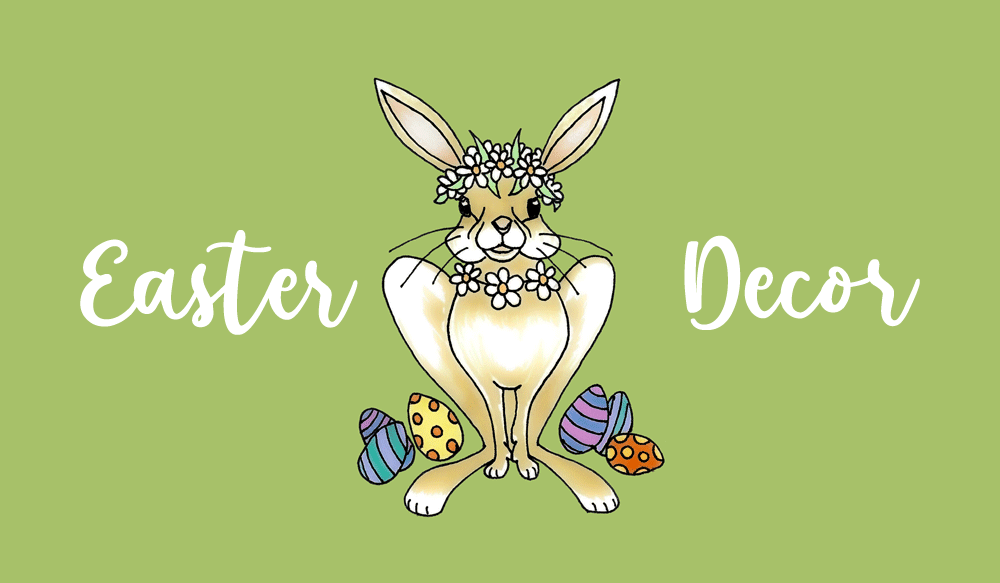Easter Decor

Decorating The Home
At one time, Christmas was the only celebration that gave rise to temporary decoration, but it has become increasingly with other festivals such as Easter and Halloween. Little trees, laden with colourful eggs in kitchens, and mossy wreaths embellished with rabbits and spring flowers on front doors are commonplace and add a temporary freshness to an otherwise samey look. A floral flourish can add a natural touch that fits in with either [or both] the religious, or the meteorological season. What is behind the symbols associated with Easter, such as eggs and rabbits?
|
|
|
|
|
|
What's Hot?
We have started a Pinterest board to chart the looks people are creating for the season, showcasing wonderful dried florals. Why not take a look to get inspiration for your own creations?
Do you have images of some of your Easter or Spring creations to share that use our products? Please tag us [@atlasflowers] on Instagram when you share, and we will be only too happy to share to our story!
Below, we delve into the history of some of Easter's customs, so why not have a read while you think about what kind of decor you are going to come up with this Easter time?
A Little History About Easter
As with many Christian celebrations, to make them more acceptable to the masses reluctant to give up their customs and rites, Easter is believed to have been blended with customs of pagan religions around the world. According to the Venerable Bede, a 7th-century monk from the north of England, Easter is named after the Anglo-Saxon goddess Eostre, or Ostara. In this Germanic-pagan culture, April was called Eostre month or Dawn month. In the northern hemisphere, it isn’t hard to see why April may be considered the dawn of the year, with the onset of Spring, it does seem like the world is awakening from slumber!
In the middle ages, the Germanic protestant reformer, Martin Luther, was said to have organised Easter egg hunts, whereby menfolk would hide the eggs and women and children would seek them out. This is something that Queen Victoria, with her ties to Germany through her husband Albert, would make popular.
Stories told in the 19th century suggest the Easter bunny and Easter eggs may have their origins in a tale of Ostara and the hare, although this theory doesn’t seem to be backed up with first-hand evidence. The legend states that Ostara, the goddess of dawn and spring, was late to bring spring to the land one year as she stopped on her travels to tend to a dying bird. She brought the bird back to life in the form of a hare, which she named Lepus. To honour its original bird form, Ostara granted Lepus the ability to lay eggs once a year and give those away to attendees of the Ostara Spring Festivals.
Other stories relating to the origin of the hare and eggs suggest that it is due to the way a young hare, or leveret, crouches down low and creates a ‘form’ [rather like a ground-nesting bird’s nest] within a field to wait for its mother to return at night. It is thought some confusion may have led people to believe that hares laid eggs rather than giving birth to their young, as lapwings sometimes commandeered these forms to lay their eggs, and so over the years this evolved to be the association between rabbits and eggs.
We may never know the full truth behind the origins of these customs, but it seems that they are here to stay!
Easter and Spring
Due to the way religious calendars work, Easter can be in March or April, and depending on which branch of the Christian faith is followed, it can be as late as May [in the case of Orthodox Christians]. Religion aside, the season is spring, and plant life of the northern hemisphere is awakening after a long, winter rest. We can expect trees weighed down with blossom, ditches and verges lined with cowslips and primroses, wood anemones, lesser celandines, and bluebells breaking through the woodland floor [not to mention all the wildlife that gives birth at this time of year]. These lovely wildflowers are beautiful but not for picking, so what is a good mix for Easter and spring décor?
If we are going traditional, then the white lily is considered symbolic of purity, rebirth, and hope, and is associated with the resurrection of Christ. It’s not uncommon to see baskets containing hyacinths or croci, or bunches of tulips and daffodils. Spring bulbs are in full bloom, and these make a wonderful sight inside and out. I remember my grandmother’s house being full of Easter Cacti all year round, such is the wonderful display they create!
More recently, a trend for Easter/Spring door wreaths has brought mosses to the fore. A quick glance at Pinterest shows the levels of creativity that can be achieved with the simple door wreath, whatever the season, moss most definitely lends itself well here. Moss preserves and colours beautifully, and many varieties are grown commercially and coloured in vibrant tones. This product makes an interesting base for a wreath and depending on the colour you choose, can be used to create a natural look or something bolder.
The wreath doesn’t have to be formed on a metal frame, there are some amazing natural products available, including willow, straw, oat grass, wheat, laurel, and mixed twigs or foliage. Blending these with dried or paper flowers, fabric rabbits or carrots, coloured eggs, and ribbons is a great way to express creativity and embrace the season.







